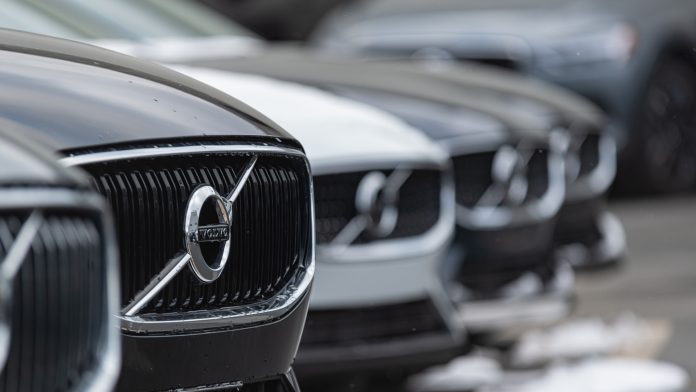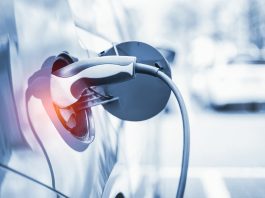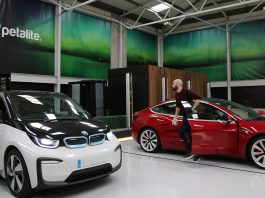Volvo admitted to increased production emissions in its C40 Recharge model, highlighting the necessity for life cycle assessments (LCAs) in order to aid battery development.
Extending life cycle assessments beyond greenhouse gas emissions to resource scarcity and social issues already suggests that the world requires more than just lithium-ion battery technology.
In a recent report by Gothenburg, Sweden-headquartered car maker, Volvo, demonstrates that electric vehicles must continue to overcome large environmental challenges, even as they reduce greenhouse gas emissions. On November 2, 2021, during the COP26 climate conference in Glasgow, UK, Volvo published a life cycle assessment (LCA) of emissions from its C40 Recharge electric vehicle.
Emissions across the vehicle’s lifetime are always lower than a fossil fuel alternative, if the C40 Recharge is driven for at least 110,000 kilometres. However, emissions from production, the materials, and battery of an entirely electric vehicle are nearly 70% higher than a similar internal combustion engine model. “Even if charged with renewable electricity, a C40 Recharge is still responsible for 27 tonnes of CO2 over its lifetime,” admitted Jonas Otterheim, head of climate action at Volvo.
With schemes to become a completely electric car company by 2030, Volvo is now seeking to further reduce this figure. Two key targets for emission reductions are batteries, which comprise 28% of the C40 Recharge’s production emissions, and steel, which comprises 19%. As a result, Volvo is collaborating with two other Swedish companies, steelmaker SSAB to develop fossil-fuel free steel, and battery manufacturer Northvolt to produce batteries using 100% renewable energy.
The impacts of life cycle assessments
LAC’s are utilised by promoting transparency and improving people’s understanding of electric vehicles’ true environmental impact. They also enable car manufacturers, such as Volvo, to “target carbon intensive areas that need to be addressed”, explained Otterheim. “This insight is critical if the industry is to decarbonise its value chain. However, greater availability of clean energy is vital if this is to be achieved. This is why we called on governments and energy companies during COP26 to increase the accessibility to clean energy.”
Jaume Alberola, sustainability technical officer at sustainable engineering advisors LOMARTOV in Valencia, Spain, agreed that LCAs will play a vital role in producing electric vehicles. “If we want to avoid mistakes, we must ensure that the change leads to the cleanest possible technology,” Alberola said. “For that purpose, life cycle assessment becomes vital.”
Alberola also highlighted that Volvo LCA’s only foreground greenhouse gas emissions. As a result, it may fail to identify excessive use of scarce resources, such as lithium, nickel and cobalt. “We are extracting a wider variety of materials and those materials will probably put other environmental areas under stress,” Alberola added. “We may end turning from one problem to another. We should ensure that we don’t cause any impact too costly for us in the long term.”
“Additionally, LCAs can potentially help avoid these problems too”, noted LOMARTOV’s senior technical coordinator Isaac Herraiz. As well as assessing existing products and processes, they can assist in identifying hotspots for further research and future innovation to diminish environmental impacts. For instance, incorporating LCAs into early-stage battery research can help reduce the use of scarce resources. “That way we can improve the final sustainability footprint of the batteries,” said Herraiz.
LOMARTOV is utilising this approach as part of ASTRABAT, a European research project with the aim to enable optimal solid-state batteries that are compatible with mass vehicle production. LOMARTOV is implementing its LCAs from the beginning of ASTRABAT’s design phase, covering environmental issues from carbon footprint to resource scarcity.
“We go hand in hand with the researchers in order to support the decisions in selection of materials and manufacturing routes, considering the environmental impacts, in an eco-design approach” explained Herraiz. “That way we can truly improve the final sustainability footprint of the batteries.” Although the results have not yet been published, LOMARTOV expect that ASTRABAT will also expand the amount of electricity that batteries can store per kilogramme.
Another reason for caution over LCAs comes because how they are conducted can limit their reliability, noted Thea Riofrancos, associate professor of political science at Providence College, Rhode Island, US. “We also see companies funding consultants to carry out lifecycle assessments, which introduces some conflicts of interest, and might undermine the rigour of the research.” Riofrancos said that “LCAs are most useful when conducted by objective scholarly or academic research centres, independent and well-resourced public sector regulatory bodies, or experts hired by communities affected by environmental problems.”
New social problems are also surfacing from the transition to electric vehicles. For example, Riofrancos documented that particularly in Latin America violence between people seeking to defend their environment and mining companies is increasing. Riofrancos commented that “whether we’re talking about copper, or cobalt, or lithium or nickel, there are also many allegations against companies involved in that subset of extractive sectors.”









